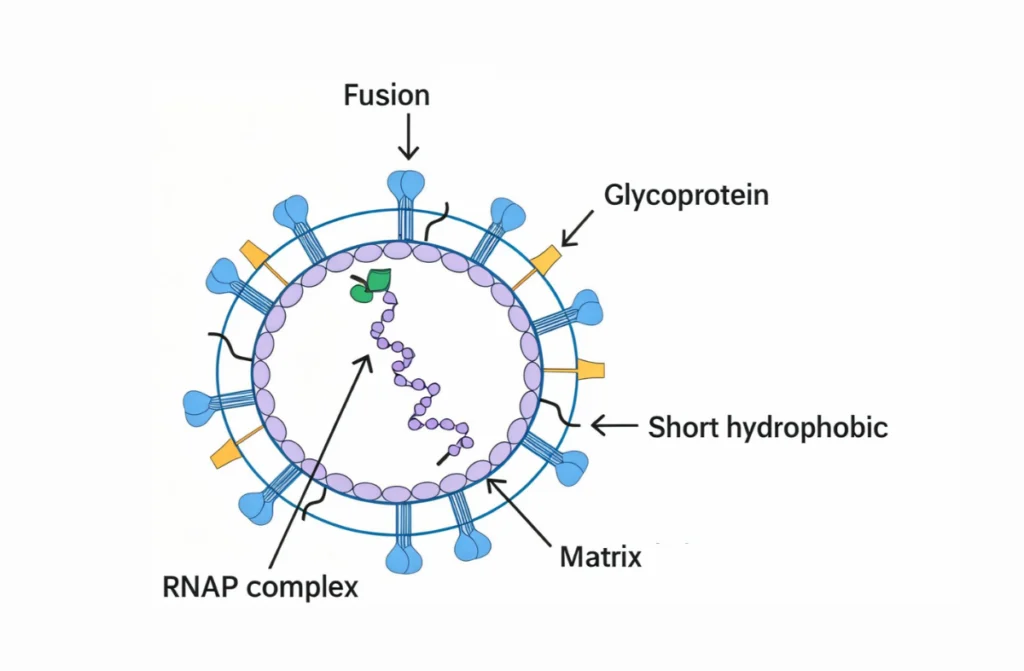When it comes to respiratory infections, you may have heard about many viruses. But is human metapneumovirus dangerous? This question has become more common as people seek to understand lesser-known illnesses that can impact their health. At Medway Hospitals, we prioritize patient education and want you to be well-informed about such conditions. Let’s explore the details about human metapneumovirus (HMPV), how it affects people, and why understanding it is important.
What is Human Metapneumovirus (HMPV)?
Human metapneumovirus (HMPV) is a respiratory virus that can infect people of all ages. It was first identified in 2001 and belongs to the same family of viruses as RSV (respiratory syncytial virus). HMPV is known to cause upper and lower respiratory tract infections, which may range from mild to severe.
But is human metapneumovirus dangerous? To answer that, we need to look at how the virus spreads and who is most at risk. While most healthy individuals experience mild symptoms, its ability to cause serious complications in certain groups makes it a concern that should not be ignored.

Is Human Metapneumovirus Dangerous?
The short answer is: it can be. For most healthy individuals, HMPV causes mild symptoms similar to a common cold, including cough, runny nose, and fever. However, for people with weakened immune systems, the elderly, or young children, is human metapneumovirus dangerous becomes a serious concern. It can lead to severe complications like pneumonia or bronchitis.
Severe cases may also require hospitalization, particularly if the infection leads to respiratory distress. This is why understanding the virus and seeking timely medical advice is critical.
Is Human Metapneumovirus Just a Cold?
While HMPV symptoms may mimic a cold, it’s important to remember that it can escalate. For someone asking, is human metapneumovirus dangerous, the answer depends largely on individual health conditions. Unlike a common cold, HMPV has been linked to hospitalizations, especially in high-risk groups.
Additionally, unlike colds that typically resolve quickly, HMPV may linger and worsen over time, especially if complications arise. This is why recognizing its symptoms early and understanding its potential risks is crucial.
Is Human Metapneumovirus Bad for You?
This brings us to the question, is human metapneumovirus bad for you? For most people, it’s not life-threatening. However, if left unchecked in vulnerable populations, the virus can cause significant harm. Symptoms can worsen over time, leading to breathing difficulties and even respiratory failure in severe cases.
Those with underlying health conditions such as asthma, heart disease, or immune suppression are particularly vulnerable. For them, understanding the question is human metapneumovirus bad for you becomes a matter of personal health and safety.
How Common is Human Metapneumovirus?
HMPV is more common than many realize. Studies show that almost everyone gets infected with it at least once in their lifetime, usually during childhood. But even with its prevalence, many wonder, is human metapneumovirus dangerous?
The virus tends to circulate more in late winter and spring, similar to the flu. Its prevalence highlights the importance of preventive measures, such as maintaining good hygiene and avoiding crowded spaces during peak seasons.
Is Human Metapneumovirus the Same as COVID-19?
One common misconception is that HMPV is related to COVID-19. So, is HMPV as dangerous as COVID-19? While both viruses cause respiratory infections, they are different in origin, transmission, and severity.
HMPV typically doesn’t spread as rapidly or cause severe complications at the same scale as COVID-19. However, both viruses can have a serious impact on high-risk groups. It’s essential to understand the distinctions to address concerns and take appropriate precautions.
HMPV Dangerous or Not?
The debate often arises: HMPV dangerous or not? The answer lies in context. For individuals with strong immune systems, HMPV is not a major threat. However, those with pre-existing conditions or compromised immunity may face severe respiratory issues. Preventive measures like maintaining good hygiene and avoiding close contact with sick individuals can reduce risks.
Understanding HMPV dangerous or not also involves knowing its potential to cause secondary infections. In some cases, HMPV can pave the way for bacterial infections, adding to its complexity.
HMPV vs. COVID-19
Comparing HMPV to COVID-19 raises the question, is HMPV as dangerous as COVID-19? COVID-19 has a higher mortality rate and broader impact, but that doesn’t mean HMPV should be overlooked. Both viruses require attention, especially in terms of identifying symptoms early and seeking medical care.
Public awareness campaigns often focus on COVID-19, but understanding viruses like HMPV is equally important for comprehensive health education.
What are the Symptoms of Human Metapneumovirus?
Recognizing symptoms is crucial to answering, is human metapneumovirus dangerous. Common signs include:
- Cough and congestion, which might seem harmless initially.
- Fever and fatigue, which could indicate something more serious.
- Shortness of breath, especially in severe cases.
For vulnerable populations, these symptoms can escalate quickly, making timely medical consultation vital. Medway Hospitals offers specialized care to manage and treat such respiratory infections effectively.
What Causes a Human Metapneumovirus Infection?
HMPV spreads through respiratory droplets when an infected person coughs, sneezes, or touches a surface. This raises another question: is human metapneumovirus bad for you? While mild cases resolve on their own, exposure in crowded spaces or poor hygiene can increase the likelihood of severe outcomes.
Understanding the modes of transmission helps in implementing preventive measures, particularly during peak seasons.
What are the Risk Factors for Human Metapneumovirus?
Certain groups are more vulnerable to HMPV infections. Key risk factors include:
- Age: Infants and the elderly are at higher risk.
- Chronic health conditions: Those with asthma or heart disease are more susceptible.
- Weak immune systems: People undergoing treatments like chemotherapy face greater danger.
For these groups, the question is HMPV dangerous or not becomes increasingly relevant. Vaccination and regular health check-ups are crucial preventive steps.
Preventive Measures
To address the question, is human metapneumovirus dangerous, prevention is critical. Here’s what you can do:
- Wash hands frequently to limit virus transmission.
- Avoid close contact with sick individuals.
- Clean and disinfect surfaces that are touched often.
- Wear masks in crowded places, especially during peak seasons.
Medway Hospitals emphasizes the importance of early detection and preventive care to minimize risks. Our team is dedicated to offering the best guidance and support for respiratory health.
Conclusion
Is human metapneumovirus dangerous? For most people, it isn’t a cause for alarm, but for high-risk groups, it can be life-threatening. The key is to stay informed, recognize symptoms early, and seek timely medical advice. At Medway Hospitals, we’re here to provide comprehensive care and guidance for all your health concerns.









 +91 9962 985 985
+91 9962 985 985

